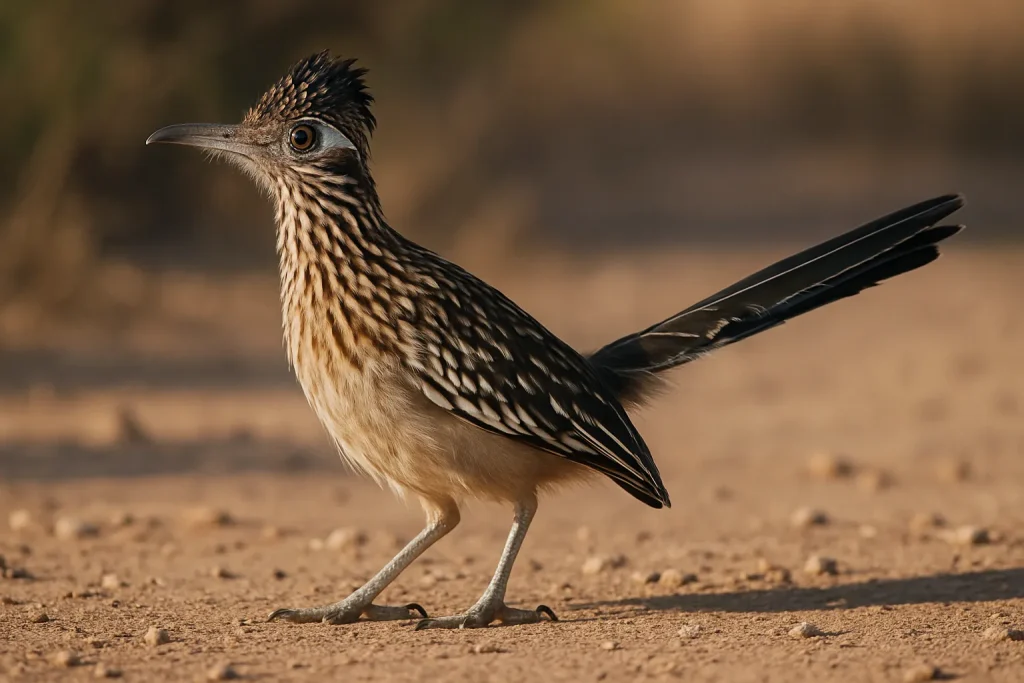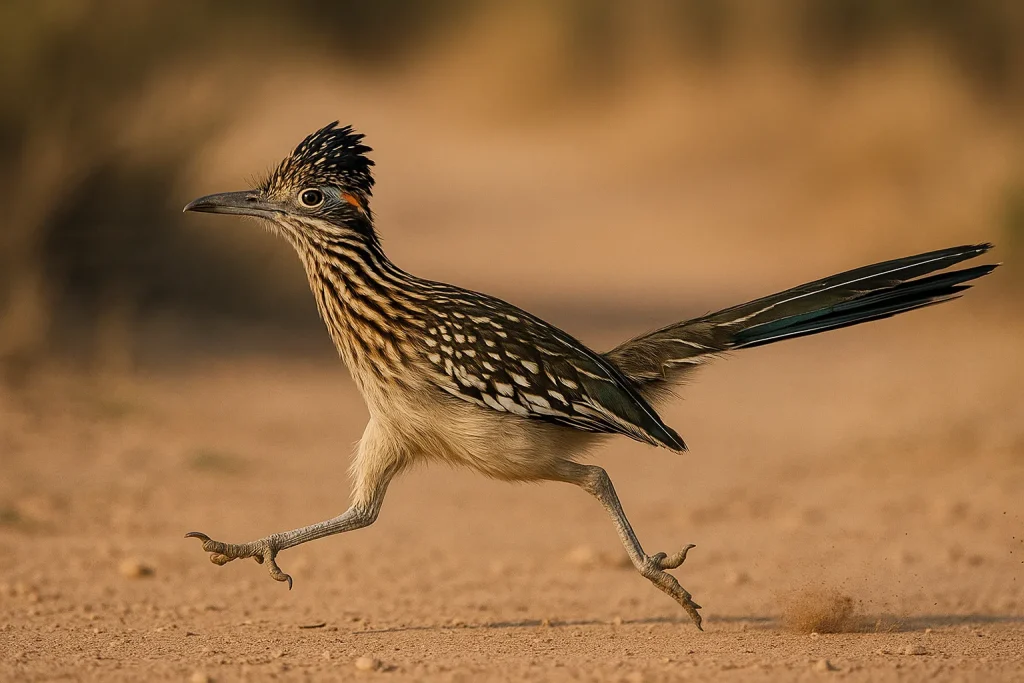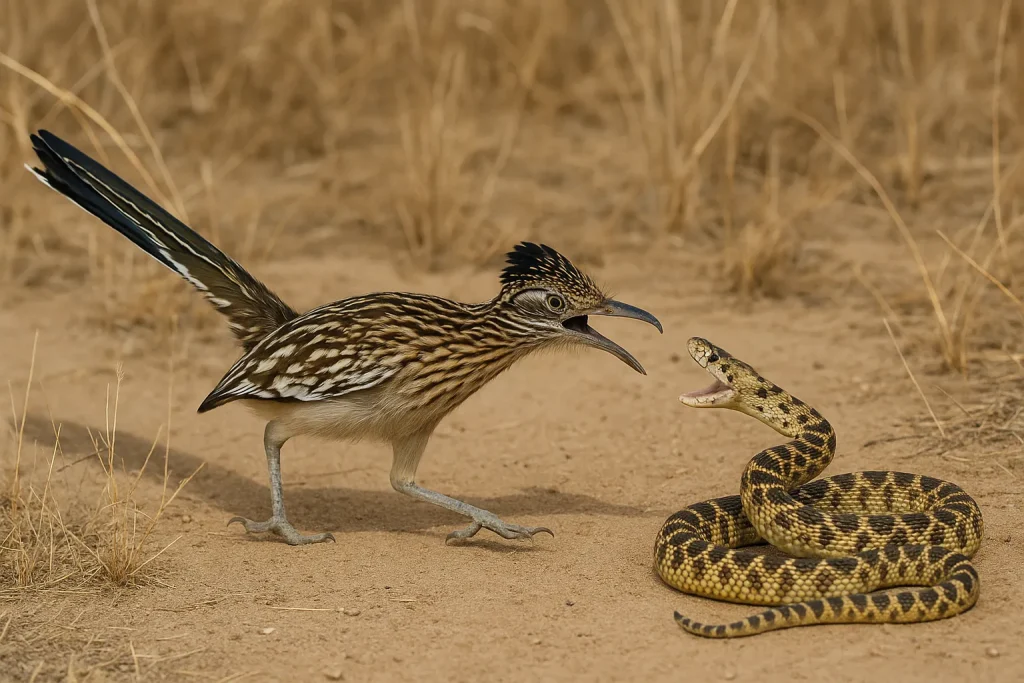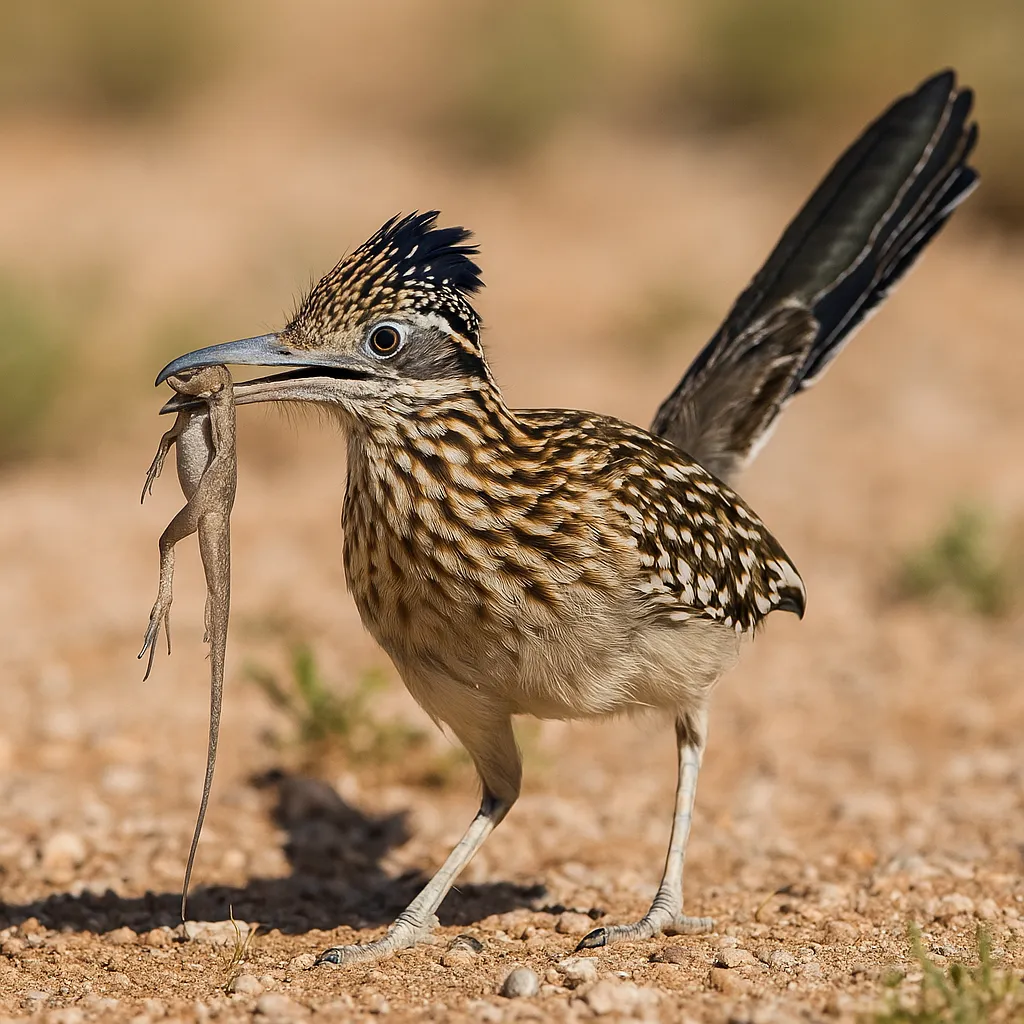Introduction
What is a roadrunner? It’s a remarkable bird known for its incredible speed on land. Belonging to the genus Geococcyx in the cuckoo family (Cuculidae), it thrives in North America’s arid regions. Unlike typical cuckoos, it prefers running to flying, reaching speeds up to 32 km/h (20 mph). What bird is roadrunner has gained fame through the “Wile E. Coyote and Roadrunner” cartoons. Moreover, its adaptability to harsh deserts makes it a subject of interest. This article explores its evolution, traits, and ecological role.
The roadrunner is a ground-dweller with unique features and habits. The two main species, the greater roadrunner (Geococcyx californianus) and the lesser roadrunner (Geococcyx velox), differ in size and range. They rely on speed to hunt, challenging the image of cuckoos as tree-dwellers. In addition, what is the roadrunner offers insights into desert survival. Let us delve into its evolutionary story.
However, its fame also highlights modern challenges. Human development and climate shifts threaten its habitat. What is a roadrunner animal blends natural history with contemporary issues. Thus, understanding its background reveals strengths and vulnerabilities.

Evolutionary Background
What is a roadrunner in terms of its origins? It descends from New World ground cuckoos in the Neomorphinae subfamily. Fossils suggest its ancestors shifted to ground life millions of years ago as deserts expanded. This change led to long legs and strong feet for running. What is a roadrunner adapted to arid conditions over time. Moreover, its lineage shows a survival strategy unique among cuckoos.
The roadrunner’s evolutionary path shaped its traits. The greater roadrunner, found in the U.S. and Mexico, evolved a larger size for diverse prey. Meanwhile, the lesser roadrunner, in Central America, suited denser shrublands. In addition, its flight ability faded, favoring speed on land. This marks it as a distinct cuckoo species.
However, evolutionary pressures persist. Competition with predators and habitat loss test its adaptability. Some suggest its speed countered large carnivores, while others note ground reliance limits it. On the other hand, its resilience shines through. Thus, its history balances innovation and constraint.

Physical Traits
What is a roadrunner physically? It has a sleek, slender body built for speed. Ranging from 56 to 61 cm (22 to 24 in), it features a long tail and a crest on its head. Its plumage blends black-brown and white streaks, offering desert camouflage. For instance, the greater roadrunner weighs 230–430 g (8–15 oz) with powerful legs. Moreover, its large dark bill grabs prey effectively.
Unlike many birds, the roadrunner has vestigial wings, limiting flight to brief, low gliding bursts. This emphasizes its reliance on running, with legs designed for agility. Its zygodactyl toes—two forward, two backward—improve grip on rough terrain. In addition, keen eyesight spots prey from afar. These traits suit its environment well.
However, this design has limits. The restricted flight hinders escape from hawks above. Extreme heat can drain energy during chases too. On the other hand, its streamlined shape cuts drag while running. Thus, the roadrunner balances speed with trade-offs.

Behavior and Diet
What is a roadrunner’s behavior? It’s a predator hunting diverse prey. It eats insects, lizards, snakes, and small birds, using speed to catch them. For example, it kills rattlesnakes by striking and dodging. Most hunting happens during the day, as it’s a diurnal bird active in sunlight. Moreover, it eats fruit or seeds when prey is scarce. This diet aids survival in tough times.
The roadrunner is solitary or pairs during breeding, showing territorial traits. Courtship involves dances, bowing, and food offerings to mates. In addition, it sunbathes to regulate heat, spreading wings in the morning. However, rivalry fights can cause injuries. This reflects desert adaptability.
Yet, its hunting impacts ecosystems. It controls pests like scorpions, per a 2019 Journal of Arid Environments study, with minimal disruption to food chains. Over predation on lizards is limited, given its mid-tier status. On the other hand, vehicle strikes on roads pose risks. Thus, its behavior offers benefits and challenges.

Habitat and Distribution
What is a roadrunner’s habitat? It lives in arid and semi-arid regions of the Americas. The greater roadrunner spans the southwestern U.S. to central Mexico, favoring deserts and chaparral. The lesser roadrunner inhabits Central America’s thorn scrub and grasslands. For instance, it thrives where temperatures hit 38°C (100°F) daily. Moreover, open spaces are key for running.
The roadrunner adapts to human areas like roads or farms. It nests in low bushes or cacti, using stick platforms. In addition, it migrates short distances for water during droughts. However, urbanization shrinks its range, increasing traffic and predator risks. This adaptability has limits.
On the other hand, climate change threatens its future. Rising heat may reduce suitable habitats further. Conservation efforts vary in success, aiming to protect these zones. Meanwhile, its resilience helps it endure harsh conditions. Thus, the roadrunner’s distribution reflects a fragile balance.

Leave a Reply